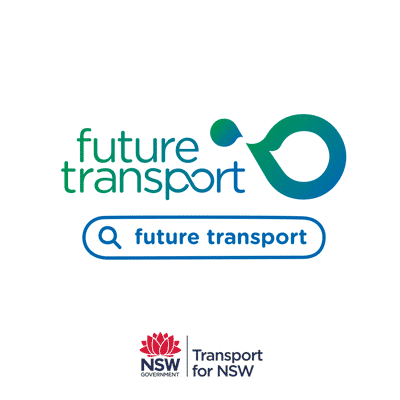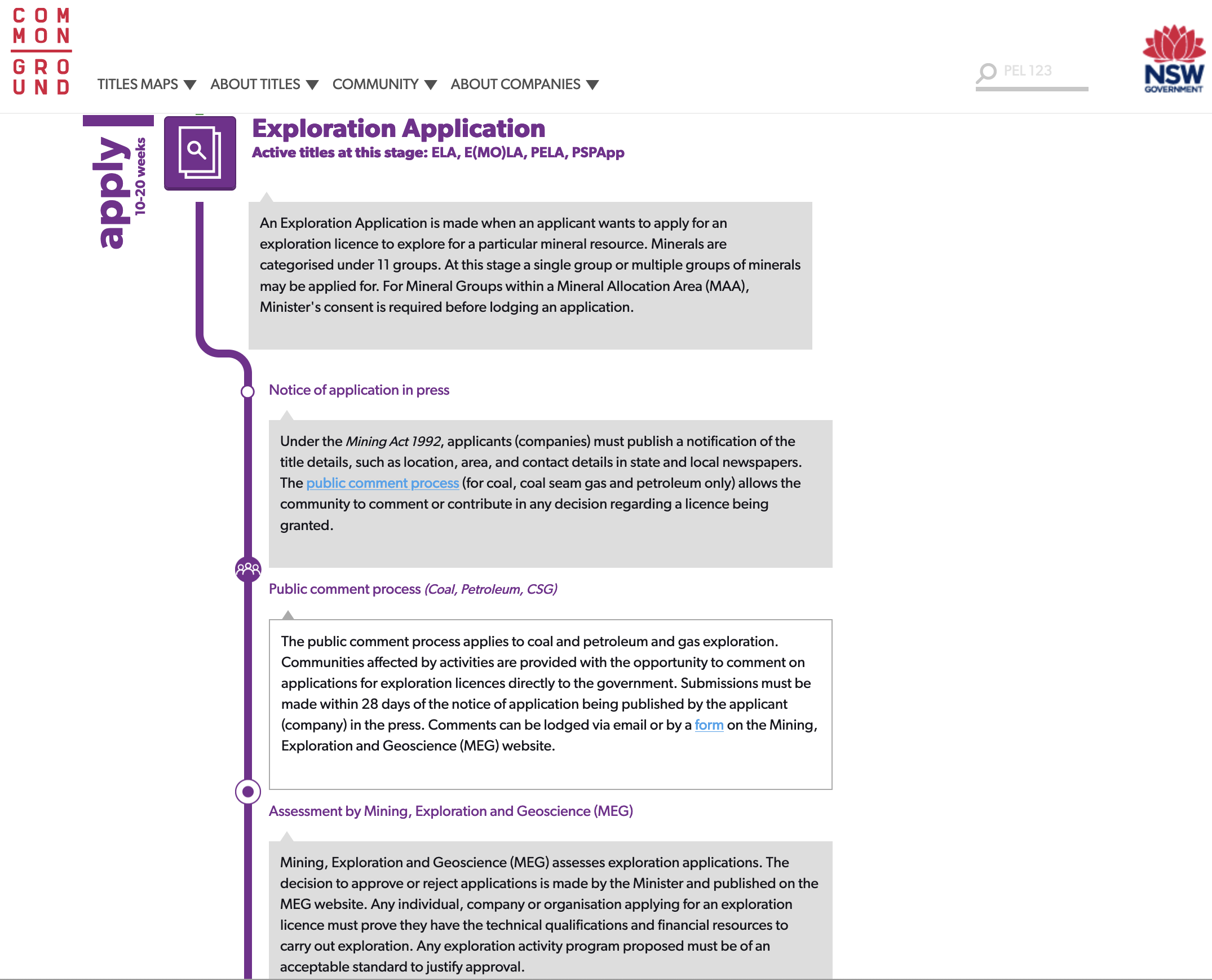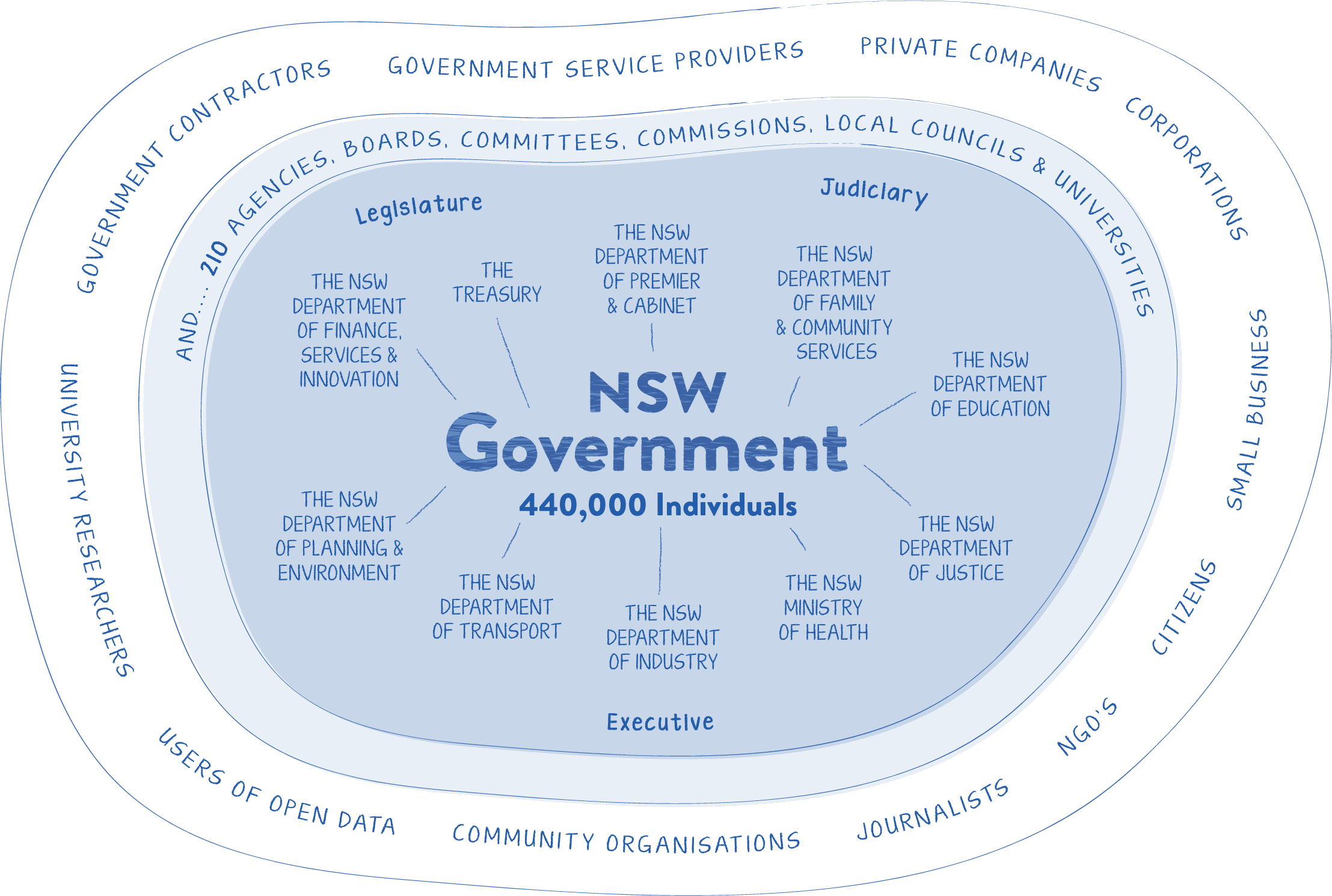Department of agriculture, water, and the Environment | Research, Content & Process analysis, information design
The Environment Protection and Biodiversity Conservation Act 1999 (EPBC) legislation.
In 2021, the Department of Agriculture, Water and the Environment (DAWE) Regulatory Practice and Engagement, Governance and Reform Branch tasked us with visualising and simply explaining the referrals, assessment and approvals processes (parts 7-9 of the EPBC Act).
We conducted research with people familiar with the legislation and new to the process, analysed the systems people have to interact with, data they provide, and the vast amount of content they need to navigate to understand their obligations. We provided recommendations on how the information experience, data access, and systems could be improved.
This information journey we produced shows the areas of uncertainty and where people new to the process likely didn’t know the EPBC Act applies to them, or didn’t know what to do.
Our work provided the foundation for the content strategy, content plan and design of the new Department of Climate Change, Energy the Environment and Water EPBC Act website.
The Environment Protection (Sea Dumping) Act 1981
In 2021, we were tasked with mapping the Environment Protection (Sea Dumping) Act process and conducting research to identify areas of confusion and where improvements could be made.
The Sea Dumping Act is one piece of legislation covering eight categories of activities with separate permits including: sea burials, artificial reefs, dredged material, vessels and man made structures (such as decommissioning oil and gas rigs).
This visualisation shows the legislation in context which applicants and permit holders may need to consider.
Transport for NSW | Creative direction, Content Strategy & Design
Future Transport | A platform for sharing and collecting ideas about the future transport needs for NSW
The vision for Future Transport is to be a living strategy - a new way of planning that will adapt to changing technologies and evolve as our communities grow. It will allow for the creation of new services and business models to suit to our diverse community’s changing needs.
To provide opportunities for everyone to contribute, Transport for NSW developed a website in 2017 to collect ideas and community sentiments via surveys, as well as the ability to provide feedback on specific sections of the draft Future Transport Strategy and Plans in 2018.
To engage with community in new ways, we created a series of data stories, illustrations to explain concepts, animations, and calls to action published via the website and social media.
This project was the beginning of an ongoing community engagement strategy to encourage people to get involved in designing the future of transport in NSW for the next 40 years.
Nook produced over 450 data stories, maps and animations and over 700 content assets, over the three phases of the project. We created a content style guide and asset library for the department, who are still producing content using our designs.
Role: Creative Direction (community and industry focused content), Content Strategy and Design, Social Strategy and Community Engagement and Service Design support.
Other service providers: Apparent (website), Small Multiples (survey/state insights), Arup (website interactive map), Agency (emoji design), Wordflow (strategy and plan conversion), L&L design (print versions).
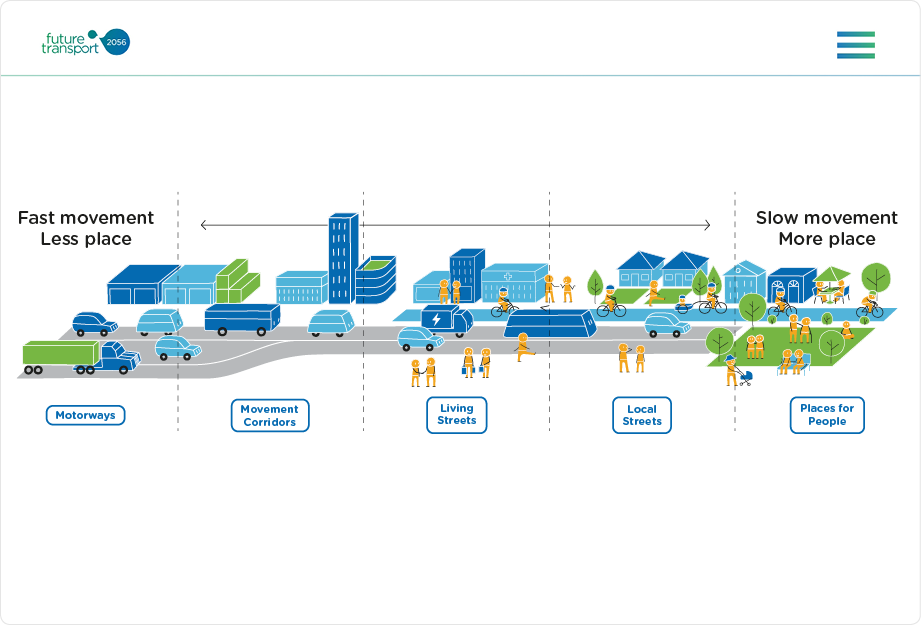
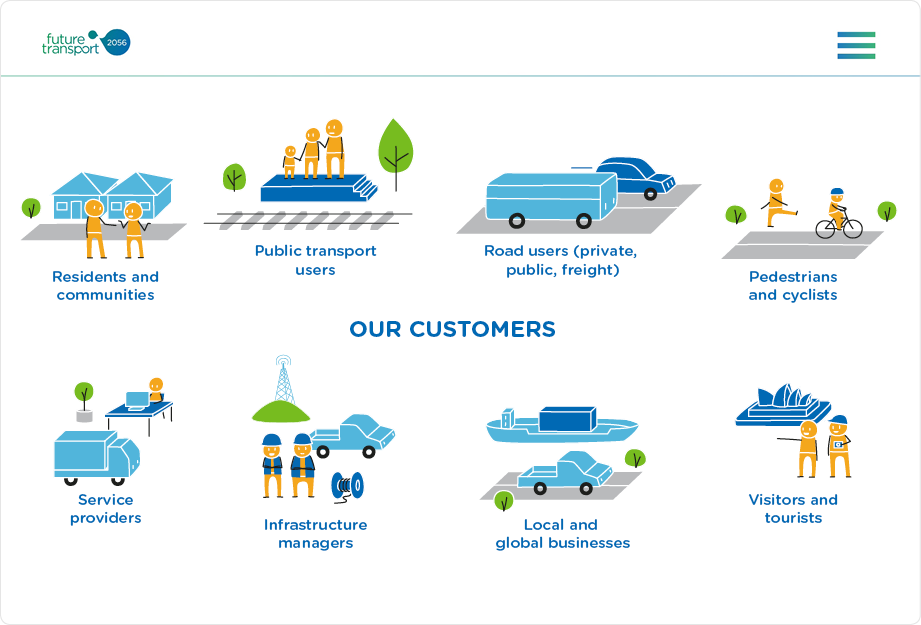
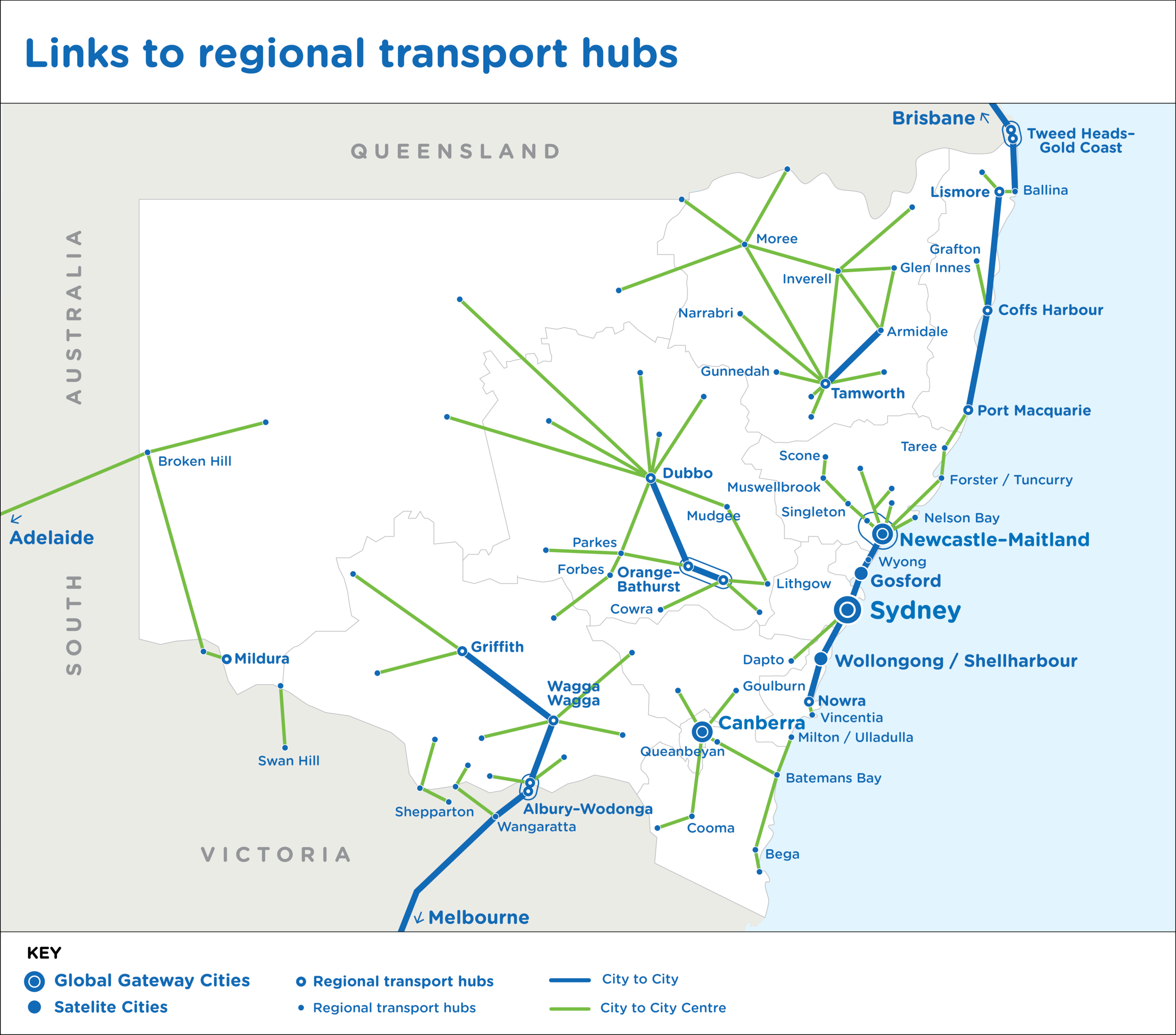
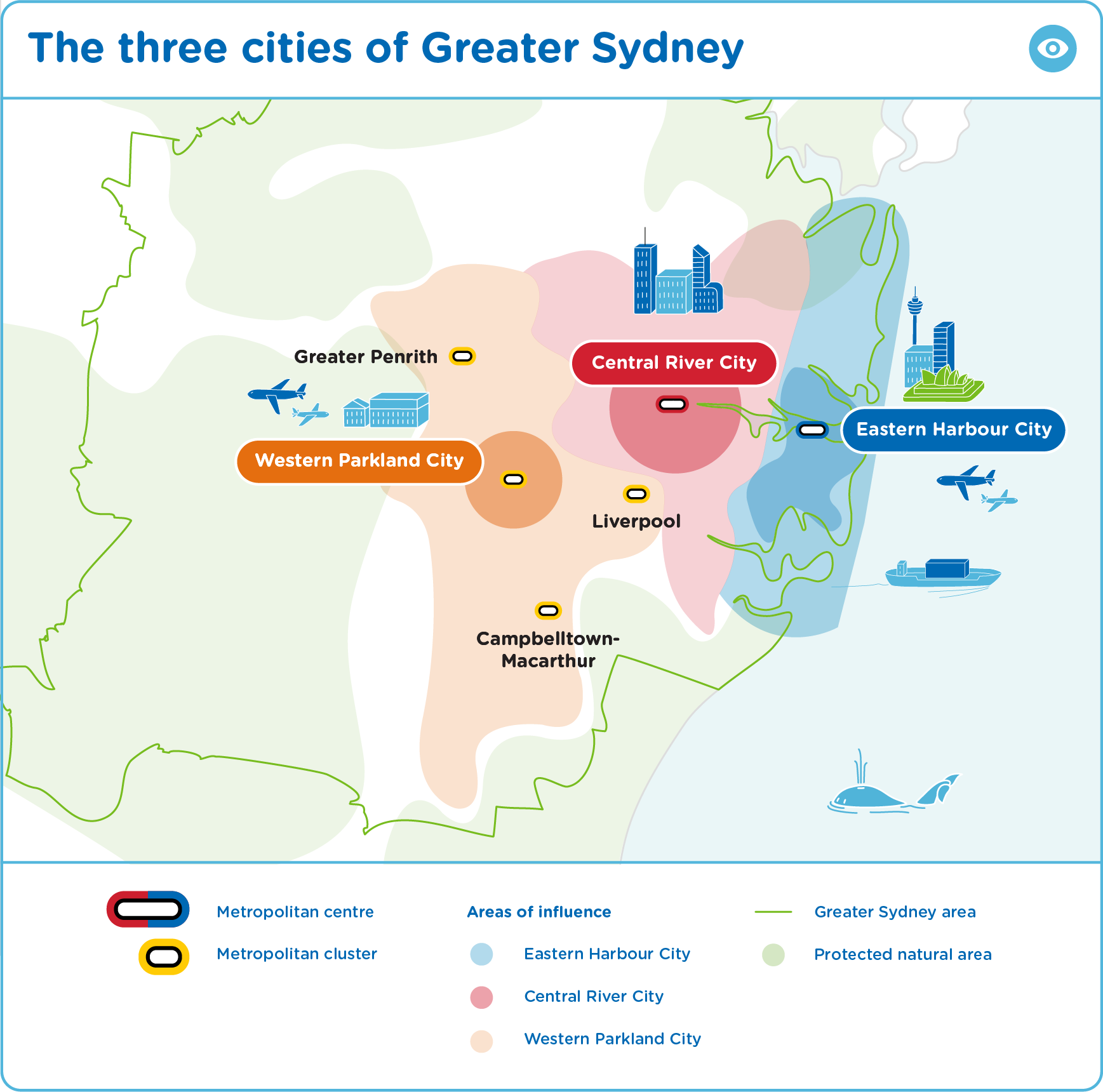
NSw trade and investment, geoscience information program | creative direction, service & content design
Common Ground
Providing easy access to information about exploration, mining, and production activities in New South Wales
Common Ground was a revolutionary mobile web app presenting locations of applications and titles, as well as simple explanations of complex processes and other useful information about titles, companies, and the place of community in the decision making process for any potential activity.
The existing geo spatial systems were designed for industry and technical audiences. Our objective was to be open, participatory, and demystify the processes related to mining and production in NSW and embody an open government approach.
Research and engagement commenced in 2012. We introduced participatory design to the NSW Government whilst making Common Ground. Over 200 people from environment and community groups, industry associations, companies, government departments, impacted communities and Indigenous organisations contributed to the project. The beta version of Common Ground was completed in 2014 and launched in 2015.
Common Ground appeared in the Natural Resource Governance Institute and Open Contracting Partnership report Open Contracting for Oil, Gas, and Mineral Rights: Shining the Light Good Practice and has provided inspiration to many international governments.
The web service was decommissioned in February 2023 by the Department of Regional NSW. We’ve met many users and fans of Common Ground over the years. For people in government, industry, and communities who knew about it, it was a very useful tool and will be missed.
Role: Producer, Service Design, Creative Direction, Content Production, Stakeholder Research and Management.
Client: NSW Dept of Trade & Investment, Division of Resources and Energy, Geoscience Information Program.
Collaborators: Small Multiples, Spatial Vision, There, Inclusive UX.
We are often asked how Common Ground came about, so we wrote an in-depth article about the making of Common Ground, the political context, and our collaborative and participatory design process.
point to point commissioner | content design, process analysis
Improving engagement through visually explaining regulation.
The transport industry’s audience of taxi and ride sharing drivers is culturally diverse, has wide ranging literacy skills, and limited time to digest dense regulation.
Industry associations were also struggling with communicating driver obligations and understanding the role of different government agencies. The big risk for the government and the general public is people not understanding the rules - and not following them.
We designed a series of process pathways, posters and guides to support the commission’s industry engagement and website content; explaining policy, roles and responsibilities, and safety standard obligations.
NSW treasury, data analytics centre | research & recommendations, content design
In 2018, NSW’s Chief Data Scientist and CEO of the NSW Data Analytics Centre, Ian Oppermann, engaged us to conduct research into how to improve data sharing across government departments and create some content to show the Data Analytics Centre project pipeline.
The Pathway to Trust and Participation is the findings of our research and a series of recommendations. It included 14 principles to improve data sharing across jurisdictions, and enable public participation in data collection and use, allowing communities to be able to contribute to government ‘evidence based’ policy design and decision making.
Aspects of this project went on to contribute to policy at state and federal levels, including the Australian Digital Council and the National Data Commission.
Nsw procurement | research & RECOMMENDATIONS
NGO Buyer Experience Research | NSW Department of Finance, Services and Innovation
NSW Procurement and procurement teams in many agencies provide help to connect people with government rates and are a source of useful information about goods, services and suppliers used by the NSW Government.
The aim of this research is to help the NSW Government better understand how community, social and human services purchase goods and services and make procurement decisions, so they can improve their services to meet their needs.
Greater Sydney COmmission | research, Service Design Recommendations
NSW Planning and Environment, Draft District Plans
The Greater Sydney Commission (GSC) was established to oversee and coordinate urban growth in Sydney. It is responsible for metropolitan planning.
Six District Plans were being drafted for publication. The purpose of the first exhibition phase was to solicit formal submissions, gather feedback and comments from all stakeholder groups on the content of the plans. The final plans were published in late 2017.
The draft District Plans are designed as six individual 100 page PDFs to be published in a book format. We were asked to focus on how the GSC could “digitise the draft plans” for community engagement to meet the legislated first release deadline and what was possible in a 12 week timeframe.







